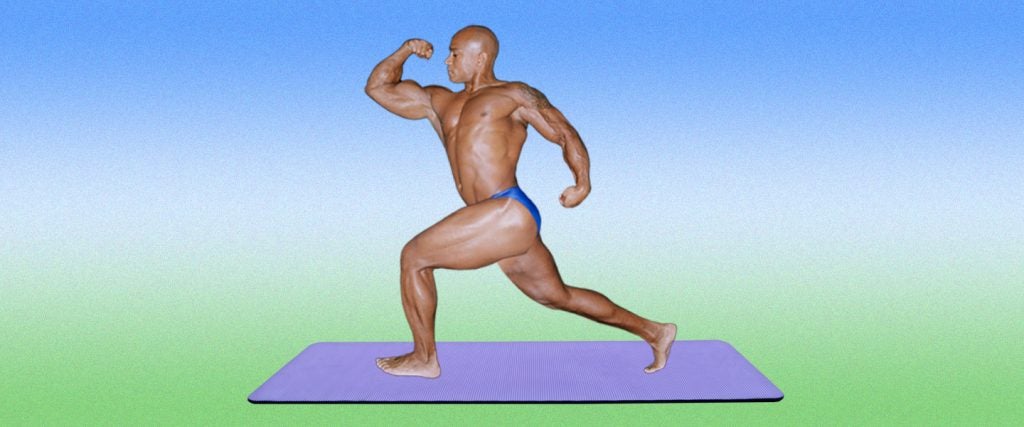During one of my many trips to Cincinnati to visit my brother and his family, I stopped to visit my friend Monica, who promptly hauled me into her stepmother’s Pilates studio to provide me with an introduction to the equipment. “This is going to be a piece of cake,” I foolishly thought to myself. But within five minutes of being on a Reformer machine, my midsection was fraught with pain simply from replicating a few basic Pilates movements.
“Most people think it’s a lot harder than it looks when they actually try it,” Monica told me with a laugh.
She wasn’t kidding. Those five minutes on the Reformer were felt by my abdominals for the next three days, and I’d been accustomed to doing tons of ab work during my workouts. If none of my daily training had prepared me for five minutes of Pilates, I was going to have to rethink my strength-training strategy.
Is Pilates even strength training though?
Well, if we permit Joseph Pilates himself to answer that question, he certainly seemed to think so. Then again, when you evaluate his old interviews, he seemed to think a lot of things were true about himself and his methods. In one of his first mainstream interviews, which appeared in the Miami Herald in April 1961, Pilates claimed to be the originator of “almost everything” weightlifters were doing in that era, as if men like Eugen Sandow and George Hackenschmidt had never existed.
This assertion certainly jibes with the theory that Pilates believed his “contrology” system was resistance training, even if he also claimed to have been “the first judo expert” in his very next breath, which seems slightly disrespectful to Kano Jigoro, the man who actually invented the martial art. “Take a horse,” said Pilates. “If a man wants to race him, he keeps him in top form. He makes the horse move. Why not keep humans in top form, too? You have to learn how to tense your muscles if you want to know how to relax.”
Before permitting John Underwood of the Herald to leave, Pilates assigned him the 34 original contrology exercises, which Pilates recommended to be done for 10 minutes in the morning, and for an additional 10 minutes at night.
Now we’re getting somewhere. Were these strength-training exercises?
It definitely depends on the individual exercise we’re talking about within that 34-move sequence.
In this video of the original 34 Pilates moves, you see several motions like the Hundred, the Roll-Up, the Corkscrew and the Side Kick that would clearly qualify as strength training, albeit of a relatively light variety. Other movements like Control, the Saw, the Spine Twist and the Spine Stretch (obviously) would lean far further in the direction of stretching.
So, in its most basic and original form, we can see why Pilates would have earned a reputation as being a blend of stretching and strength training, which is loosely defined as physical exercises that are intended to improve the strength and endurance of a muscle or a set of muscles. Many of the Pilates movements certainly hold that intent, and are capable of accomplishing that goal even if none of them are ever going to pack heaping helpings of muscle onto you.
These original 34 moves are all ground-based. What’s up with the machines?
You’re probably referring to the same Reformer that tormented me. Pilates constantly used machines in his training practices. Dancer Maria Karnilova was a student of Pilates, and spoke of him and his devices in a June 1962 interview that appeared in the New York Daily News. “He has all kinds of machines and exercises that pull muscles,” she described. “You might say my suppleness is homegrown and machine-maintained.”
If you evaluate a full-body Reformer training session, it would be impossible to argue the point that Pilates qualifies as strength training. To the eyes of a seasoned gym bro — myself included — some of the idiosyncrasies of the Pilates-specific movements may seem unnecessary. But it’s crystal clear that the resistance is coming from the weight of the body, and it’s similarly plain to see that there is a strength-training movement to prioritize the muscle development of every body part. This includes variations of chest flys, straight-arm rows, pullovers, tricep extensions, individual leg presses and so on and so forth.
As an added benefit, you’ll also probably acquire all of the requisite flexibility and body control necessary to play goaltender in the NHL like my beloved Dominick Hasek. Because if Pilates has taught me anything, it’s that you don’t need to strength train with the ferocity of a bear in order to forge the power and grace of a panther.

